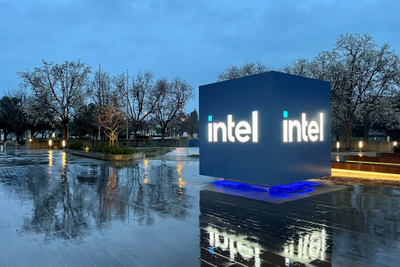
Nine years ago, Intel shelled out $16.7 billion to acquire FPGA maker Altera, its largest acquisition ever, and over time it began the process of integrating Altera into the company. However, late last year the company announced it would spin out the FPGA business as a separate brand, complete with its own CEO.
It has now done so, and it revived the Altera brand name for the company. Sandra Rivera, a longtime Intel veteran who previously headed up the data center division, is now chief executive of the FPGA business, which will continue to operate as an Intel company with its own profit and loss sheet.
In a press briefing, Rivera predicted Altera’s FPGA business has a total addressable market (TAM) of $55 billion over the “next several years,” which represents a significant gain over the $8 to $10 billion it’s estimated at now. She didnât elaborate on how long that time period would be.
Rivera said she is working on relationships with Intelâs channel partners to expand Altera’s portfolio to a broader range of uses and applications. The FPGAs, sold under the Agilex brand name, have focused on the midrange and high end of the market up to now. But Intel is expanding into the lower-end market with the Agilex 3 product line.
“We have an expanding portfolio that allows us to deliver products and market from the very top in terms of that power, performance and capability, and features all the way to the most cost-sensitive, the most footprint-constrained and power-constrained environments,” Rivera said.
She has a track record of success. In 2021, newly hired CEO Pat Gelsinger put Rivera in charge of the data center and AI (DCAI) group, which is the group Gelsinger once led before being ousted from Intel in 2009. DCAI had lost its way, and its ambitious Xeon processor, code-named Sapphire Rapids, was very late. It was under Riveraâs leadership that Intel got Sapphire Rapids out the door and its successor, Emerald Rapids, on track.
A few months back, Intel change the branding of the Agilex line to match that of its Core desktop and mobile processors, with Agilex 3 at the low end, and the increasingly higher performance Agilex 5, 7, and 9 brands.
Agilex 9 is now in volume production, while Agilex 7 F-series and I-series devices are released to production. Agilex 5 is now broadly available, with Intel proclaiming 1.6x better performance per watt versus competing products. Coming soon is Agilex 3, the low-end, low-power line of FPGAs targeted at low-complexity functions for cloud, communications and intelligent edge applications.
The spinoff is in contrast to AMD, which acquired FPGA leader Xilinix in 2022 for $35 billion. AMD has fully integrated the Xilinx team and product line into its offerings, and FPGA sales are contributing to the bottom line.
âIntel has not had the best record in acquiring and successfully leveraging companies, like Mobileye and McAfee and so on,â notes Jim McGregor, principal analyst with Tirias Research. âAt least they didn’t kill Altera. Altera is actually pretty well positioned to succeed going forward.â
MacGregor thinks the change in emphasis on FPGA is part of the overall change in corporate strategy since Gelsinger took over, where Intel is seemingly more interested in competing with TSMC in the foundry business than it is with AMD and Nvidia.
âObviously, being a foundry is kind of number one focus for Pat and the new management team, as well as focusing on x86 architecture. So [Intel is asking] where are you going to continue to invest, and how much are you going to invest?â
MacGregor believes there will be a technology transfer between both Intel and Altera, and that it is is going to benefit both entities eventually. Initially, Intel used Altera FPGA blocks, and in the future, Altera hopes to use more of the Intel technology and a lot of its products.